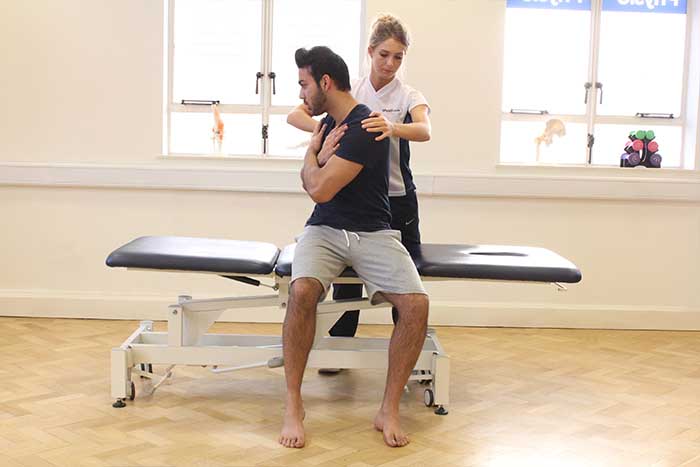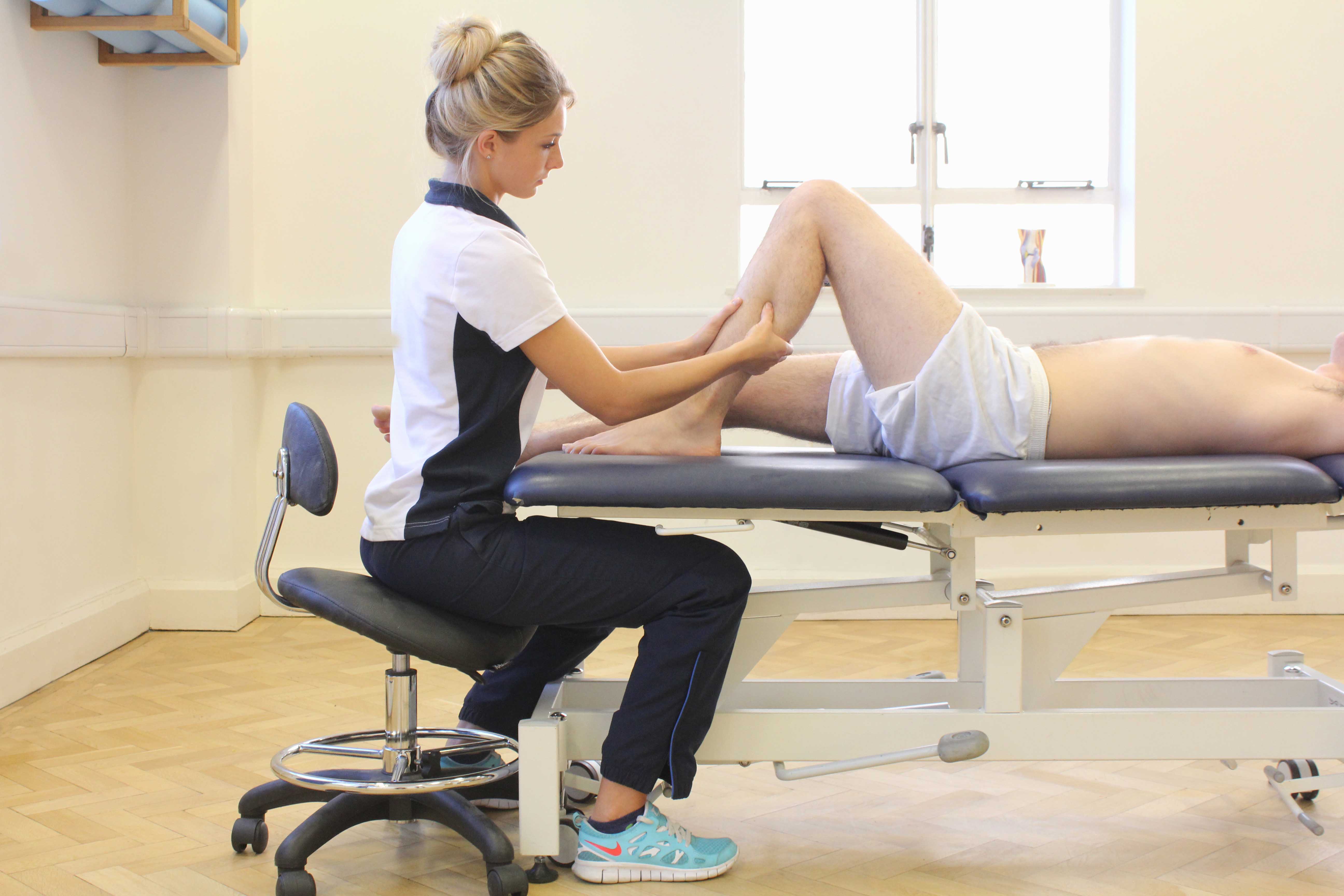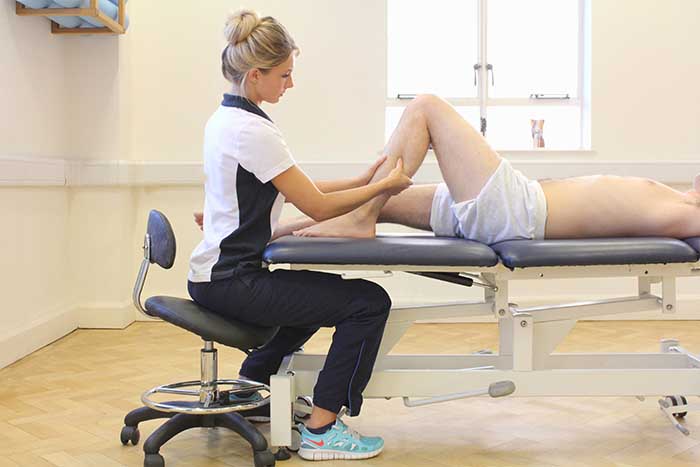Massage therapy can be extremely beneficial in both a physical and psychological sense to an individual suffering from a terminal illness. A range of massage techniques can be applied and tailored to the individual which vary in stroke pressure, direction and rhythm depending on the specific goals and aims of the treatment. Massage therapy can produce a number of benefits including a reduction in muscular tension, pain, psychological stress and the maintenance of healthy muscles. Overall, massage therapy can be used to improve the quality of life for an individual by improving range of movement and muscular function.

What is massage for terminal illness?
A terminal illness refers to any disease which cannot be cured as no conservative therapies are available to eliminate the condition from the body. An example of a terminal illness can be Alzheimer's or Parkinson's disease. Terminal illnesses can affect an individual both physically and psychologically. Physical effects can be experienced as the body may reduce in functional ability due to an increase in pain and a decrease in flexibility, range of movement and energy. Psychological effects may also be experienced as the individual may not be able to perform the activities once enjoyed, this can be both stressful and frustrating.
When can massage help for terminal illness?
Massage therapy which focuses on both touch, one to one attention and specialised communication can be effective in improving the quality of life especially in the later life stages. This non-pharmacological tool can reduce pain and increase comfort and is therefore recommended for a patient suffering a terminal illness. Massage therapy can be applied in a number of circumstances such as;
 Above: Soft tissue massage to ease muscle pain associated with terminal conditions
Above: Soft tissue massage to ease muscle pain associated with terminal conditionsMassage therapy can be beneficial when applied to an individual suffering from stress due to a terminal illness. The physiological changes which occur during the massage help to reduce the feeling of stress and anxiety through alterations in hormone and chemical production. The enjoyable feelings of the massage stimulate the production of endorphins such as serotonin and dopamine, which are associated with positive feelings and relaxation. Massage can also reduce the release of stress hormone cortisol, which is related to negative thoughts, stress and anxiety. A reduction in the release of cortisol will enable the individual to feel happy and relaxed.
Massage therapy can also be applied during the presence of tight muscles. Tightness and tension within muscular structures are a common symptom alongside a terminal condition due to alterations in physical activity, lifestyle and function. Massage therapy can help reduce muscular tightness through increasing tissue temperature and tissue elasticity. Massage can increase tissue temperature by stimulating an increase in blood circulation through vasodilation. Vasodilation refers to the widening of blood vessels as the smooth muscles surrounding the vessels relax. Massage can increase tissue elasticity, this is achieved through breaking up adhesive connections between collagen fibres within the muscle. An increase in tissue temperature and increase in tissue elasticity can allow the muscle to relax allowing a reduction in pain, tension and increase in flexibility to be observed.
Massage therapy can also be applied during the presence scarring. Scar tissue is made of adhesive type 3 collagen fibres which are laid down in a haphazard formation. Scar tissue acts as the body's glue which has great tensile strength and is used to repair damaged tissue. In a successful healing process type 3 collagen is converted into the more functional and elastic type 1 collagen which lies in an organised, longitudinal fashion. Sometimes efficient healing does not occur leaving the body with high levels of type 3 collagen, this can cause pain, reduced range of movement, and reduced elasticity. Massage therapy can help break up the adhesive type 3 collagen and assist in the conversion into type 1 collagen. Massage can reduce the appearance of scaring, improve tissue elasticity and flexibility.
What are the physiological effects of a massage for terminal illness?
The application of massage to an individual with a terminal illness can produce a number of physiological effects such as;
Massage can produce an increase in temperature through increasing blood circulation. An increase in blood circulation is achieved through stimulating vasodilation. Vasodilation occurs when smooth muscles surrounding blood vessels relax allowing the vessels to widen and allow a greater blood flow. Vasodilation can be observed visually through a red or pink colouration of the skin. An increase in tissue temperature can allow tissues such as muscles to relax, this can lead to a reduction in pain, improved range of movement and increased relaxation.
Massage can increase cellular exchange. Cellular exchange refers to a process whereby waste products are removed from tissues and replaced with essential nutrients and oxygen. An increase in cellular exchange is achieved through an increase in blood circulation and increased capillarisation. Capillarisation refers to a process where the number of capillaries within one area increases. Capillaries are responsible for cellular exchange. An increase in cellular exchange can result in a reduction of pain and improved health of muscles.
Massage treatment can increase the release of natural endorphins, serotonin and dopamine. Endorphins are hormones released during times of happiness and relaxation, such as that during a massage. If levels of endorphins drop within the body an individual can be left feeling depressed, down and lonely. Massage can stimulate the release of endorphins through the application of gentle and long massage strokes. An increase in the levels of endorphins within the blood can leave the individual feeling happy, relaxed and content.
Massage can decrease the release of cortisol. Cortisol is a stress hormone released during times of threat from the adrenal gland. An increase in the release of cortisol can be beneficial during times of threat as it allows the individual to become alert and observant. If levels of cortisol remain high for long periods of time the individual can feel anxious, stressed and depressed. Massage can decrease the release of cortisol through the application of gentle massage strokes.

What are the benefits of a massage for terminal illness?
Massage therapy using a range of massage techniques which alter in stroke pressure, direction and rhythm can be applied via a skilled therapist to produce a number benefits. The benefits experienced following massage therapy can be both physiological and psychological such as;
Massage therapy can decrease the pain through the pain gate theory and increased tissue temperature. Massage can decrease pain through the pain gate theory which states when a painful stimulus is present c nerve fibres are stimulated to send a message of pain up the spinal pathway to the brain. When massage is applied, alternate nerve fibres are stimulated which send a message regarding the massage stroke depth and direction to the brain. The message regarding the massage treatment are able to travel to the brain much quicker due to myelination of that specific nerve fibre. The pain gate theory explains how a reduction in pain is achieved as the messages of massage override the messages regarding pain which results in a reduction of pain being felt. Massage can also reduce pain through increasing tissue temperature through an increase in blood circulation, this allows tissue such as muscle to relax which reduces pain.
Massage therapy can also be used to reduce psychological stress which is a common symptom associated with terminal illness. Massage therapy can alter the production of certain hormones and endorphins which can help improve and regulate mood. Massage can stimulate the release of endorphins such as serotonin and dopamine through the application of gentle massage strokes. An increase in the release of endorphins will leave the individual feeling positive, relaxed and happy. Massage can decrease the release of the stress hormone cortisol. A reduction in cortisol, can reduce feelings of stress, anxiety and depression.
Massage therapy can also be used to relieve tightness within muscles. Muscular tightness is present in almost every individual at some point in their life. The risk of muscular tightness can sometimes be heightened when battling a terminal illness due to the stress and altered lifestyle which can occur. Massage techniques using moderate to deep strokes can relieve muscular tightness through the application of long longitudinal strokes which can increase tissue temperature and tissue elasticity. Massage can increase tissue temperature by stimulating blood circulation through vasodilation. An increase in tissue temperature allows the muscle to relax and a reduction in tension and pain can be observed. Massage can increase tissue elasticity through manipulating collagen fibres within the muscles, breaking up adhesive connections within. An increase in tissue elasticity can allow the muscle to become more flexible and an increase in range of movement and decreased pain can be observed.
Massage therapy can also improve and maintain healthy muscles. It is important that muscles are regularly used to stay healthy. In some cases such as terminal illness, physical activity can be reduced and replaced with a more sedentary lifestyle. In turn this can reduce blood circulation, increase tissue adhesiveness and reduce the chance of nutrients reaching the muscles. Massage therapy can help to improve the health of muscles by increasing the blood circulation which brings vital nutrients essential for tissue repair and remodelling to the area. An increase in blood circulation can also enables blood vessels to remove any waste products, dead or damaged cells from the muscle. The removal of waste products from tissues can decrease pain felt and improve performance.
Summary
Massage therapy can be used as a treatment or management strategy for an individual with a terminal illness. Massage treatment can be extremely beneficial when applied during the presence of stress, tight muscles and scarring. During the application of massage a number of physiological changes can occur such as an increase in temperature, cellular exchange, release of endorphins and decreased release of cortisol. The physiological changes during the massage can produce a number of benefits such as a decrease in pain and stress, relieve tight muscles and maintain healthy muscles.
How can I arrange a massage to help terminal illness?
To arrange a massage to help terminal illness at Physio.co.uk, email us at office@physio.co.uk or call us on 0161 883 0077.
You can also book an appointment online and save £10.

 0330 088 7800
0330 088 7800


































